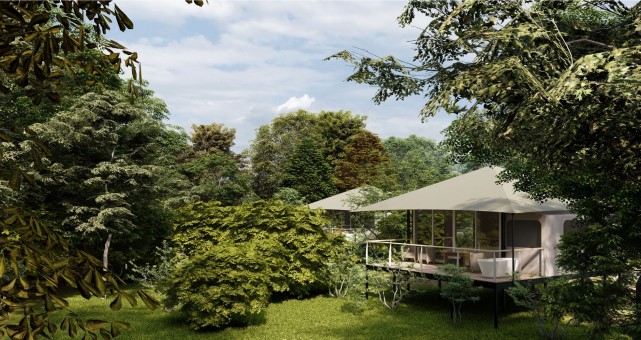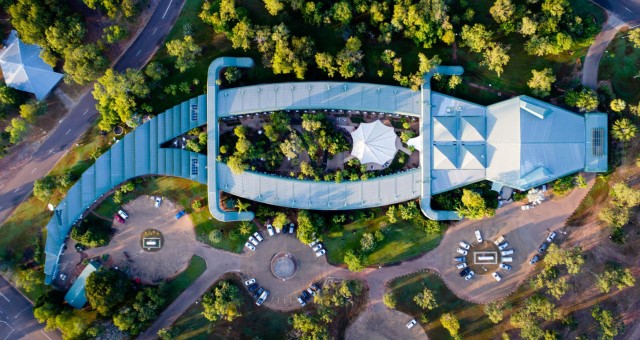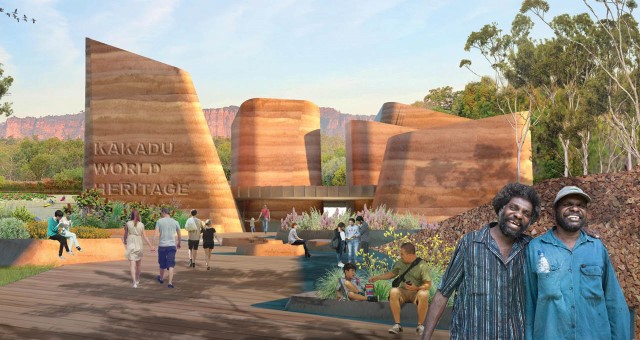Investment in accommodation at Kakadu in the Northern Territory is underway in a bid to drive visitors to the area as the former mining town seeks to establish itself as a sustainable tourism hub.
At Cooinda Lodge, situated in the heart of Kakadu National Park, five new luxury water villas will be introduced in early 2023, in time for the peak tourism season.
The Yellow Water Villas, located next to Kakadu’s Yellow Water Billabong, have been built on stilts to minimise any impact to the land, a key priority for the Traditional Owners, and no trees were cut down in the process.
Each fully air-conditioned villa includes a king size bed, ensuite bathroom, dining area, as well as lounge area with daybeds. On the veranda, guests can also make use of a BBQ and private bathtub. The retreats will be named after an animal native to the area and will feature personal stories from the local community.
Meanwhile, upgrades are underway at Indigenous-owned Mercure Kakadu Crocodile Hotel with more refurbishment plans in the pipeline.
The Mercure hotel, which is part of the Kakadu Tourism group and managed by Accor, is the largest hotel in the National Park and is pivotal to the local tourism industry.
“The hotel has continued to upgrade its product and services, with refurbishment of bathrooms beginning and the addition of Indigenous-designed features in bedrooms,” said Kakadu Tourism Chair, Rick Allert.
“A major solar installation is planned for the rooftop of the hotel, which will be important for sustainability, while the hotel’s interior gardens have been totally redesigned to focus on sustainable, Indigenous plants.”
Developed by the local Gagudju Association in the 1980s, the hotel is built in the shape of a 250-metre long, 30-metre-wide giant crocodile or ‘Ginga’, a spirit ancestor of the Gagudju people, and is the only crocodile-shaped hotel in the world.
Being Indigenous owned, the hotel plays an integral role in employing and supporting Indigenous businesses, Allert explained.
“We will be expanding the operations of the hotel’s Ochre Art Gallery, with an artist-in-residence program, which also enables guests to have first-hand interaction with local artists,” he said.
“We have increased our local Indigenous food and beverage procurement, supporting innovative enterprises such as Kakadu Kitchen and Yibekka Kakadu Tours to give visitors a real taste of Kakadu’s unique Indigenous culture.”
While the return of international travellers to Australia has been slow, Allert is confident that demand is there for Indigenous tourism.
“Research by Tourism Research Australia prior to the pandemic showed that interest in Indigenous tourism experiences has been growing strongly, with a 42% increase in overseas and Australian visitors taking part in an Indigenous tourism experience between 2013 and 2019,” he said.
“Kakadu is an exceptional destination for visitors who want to experience the world’s oldest continuous living civilisation, and the Mercure looks forward to sharing this remarkable cultural landscape with visitors from around the world.”
As part of a $400 million government investment in Kakadu, a new infrastructure plan has been drawn up for the town of Jabiru which will see the introduction of a state-of-the-art tourist centre established as well as a Bininj Resource Centre to support Aboriginal education and cultural preservation.
The funding has already supported the introduction of a new hybrid renewable power station in Jabiru to provide low-emissions energy for the region.



